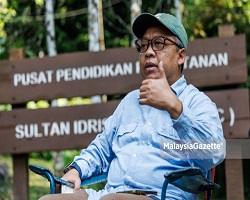In reality, life on earth cannot be sustained without the forests. In a sense, the forests breathe for the earth, essentially absorbing carbon dioxide from the atmosphere, while producing the vital oxygen. In doing so, the forests help to regulate the global climate, by serving as a ‘carbon store’ absorbing nearly 40 percent of the fossil-fuel emissions produced by human activities.
The forests also provide fuel for cooking and warmth, medicinal plants, food, wildlife habitat, clean water, spiritual and cultural touchstones, and for many, their livelihood is dependent on the forests. According to the FAO (2021), approximately 70 percent of terrestrial animals and plants make their homes in forests, while more than 25 percent of the world’s people, or almost 1.6 billion people, rely on forest resources for their livelihoods, with another 1.2 billion of them using trees to generate food and cash. The economic value of these ecosystem services has been estimated at $33 trillion per year, which accounts to almost twice the gross domestic product (GDP) of the United States of America.
In a recent documentary, the BBC (2022) showed that despite all that forests do for us, forests continue to be sacrificed to unsustainable human consumption, at man’s peril. Each year, about 13 million hectares of forest land is lost, which is works out about 60 acres per minute. Unfortunately, to regenerate the resources mankind has already consumed, land area equal to almost 1.5X the land area of planet earth is required. The truth is the demand from mankind for resources is still growing and shows no sign of slowing down. No matter how it is calculated, the math just doesn’t add up. Mankind’s present rate of resource consumption cannot be sustained.
As long as there are human beings on this planet, there will be a demand for wood, pulp, and other forest resources, and there will be businesses that endeavour to meet that demand. Furthermore, the people who live and work in forests will always need to feed their families and put a roof over their heads; the stark inequities in our global economy increase the economic desperation that fuels illegal logging and poaching. The only realistic way to conserve the forests is to apply the Sustainable Forest Management (SFM) practices, a conservation-and-livelihoods approach that has been promoted globally since the 1980s, and one that’s already proven successful on nearly half a billion acres of land around the world.
The term “sustainable forestry” is not new, but is often misunderstood by many. How can logging ever be sustainable when, by definition, it requires that trees be cut down? The complete answer is complex, but to simply put it in layman’s language, it would mean finding the balance between what is growing and what is to be removed. The hallmark of sustainable forestry, from a purely ecological perspective, is the extent to which forestry practices mimics natural patterns of disturbance and regeneration. Sustainable forestry balances the needs of the environment, wildlife, and forest communities, ensuring that humans dependent on the resource can continue to earn decent income, while conserving the forests for future generations. There are many practical steps that a community or business can take to protect the health and longevity of a forest while still profiting from the production and sale of timber and other forest products, such as nuts, fruits, oils, and plants.
One good example of best practice is the Forest Stewardship Council (FSC), an international body that develops and maintains the most globally respected standard for managing forests, and also certify forestry businesses that meet the standard’s strict environmental, social, and economic criteria. The FSC Chain-of-Custody (CoC) certificate is awarded for the tracking of certified wood and other raw materials from forest to manufacturer to store shelf, confirming that an item that bears the FSC trust marks actually contains certified products. This seal allow conscientious consumers an easy way to spot and support responsible producers.
Beyond forest certification, training to forest communities around the world in methods designed to conserve forests, safeguard wildlife, protect workers must also be extended, so as to support their efforts to earn a living as responsible forest stewards. Through certification practices, buyers who are interested in sourcing certified forest products are linked to the relevant suppliers.
In fact, in promoting sustainable forestry practices, the move towards achieving the United Nations’ Sustainable Development Goals (SDGs) is being pursued too. After all, sustainable forest practices is only one viable method to mitigate the impact of global climate change, but it also serves as a means of promoting decent and green jobs, especially through the implementation of the green economy. Therefore, efforts to promote sustainable forestry should be hailed as a positive move in the right direction.
Through such sustainable forest industries, the forestry industries, as a whole can be transformed for local economies and sustainable development. It can create value from forest use through investments in local processing, foreign exchange earnings, employment, technology transfer, training and skills development, and the payment of taxes and royalties to governments. In fact, forest companies also perform social functions that governments are unable to provide, such as health care, education and infrastructure development, especially in remote areas, which is most useful for indigenous communities and other displaced population.
In essence, SFM is the key to sustaining the forest resources, which will ensure sustainable living for mankind for many more years to come and the future generations.
Tarikh Input: 07/02/2023 | Kemaskini: 07/02/2023 | masridien
PERKONGSIAN MEDIA




























